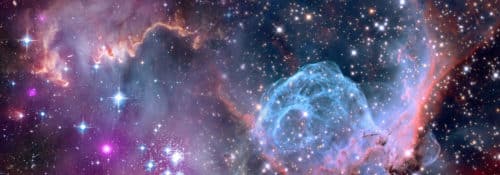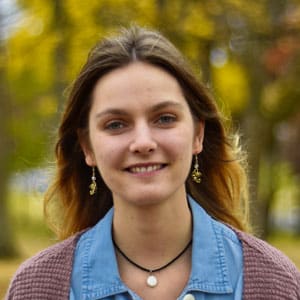
Physics, Philosophy, and Sci-Fi
Written by Elizabeth Vietor
I know next to nothing about physics, but during my sophomore year, I read an entire book about the science behind the 2014 film Interstellar. In doing so I learned more than I ever expected to know about such evasive topics as tidal gravity, warped space and time, wormholes, gravitational waves, and the fourth and fifth dimensions.
This book was part of a weekly seminar titled “Physics and Philosophy in Cinematic Science Fiction” taught by Assistant Professor of Physics Timothy Dolch and open to the general student body. The class was formatted such that we watched a popular science fiction movie for “homework” every week—besides Interstellar, titles included Arrival, 2001: A Space Odyssey, and Solaris—and then discussed it in the following class, paying special attention to noteworthy concepts of physics and philosophical interpretations. Often, the conversation would center upon how well these movies abided by the principles of physics. We were eager to learn to what degree, theoretically, the adventures of the movies could actually take place. Sometimes our conclusions were surprising—for instance, the wormhole that the astronauts use to cross the universe in Interstellar could theoretically exist!
These class meetings occurred in a tiny classroom downstairs in Strosacker Hall crammed with the tangled wires of a few different computers, a huge blackboard covered with scrawled equations, and a few couches pushed to the sides: an atmosphere well-suited to the mood, I thought.
While I found the discussions fascinating, watching the movies was my favorite part of the class. Those of us who were free would gather in the basement of Lane Hall on a Friday or Saturday night and choose an optimal classroom. Someone would usually bring popcorn. One night we ordered a Hawaiian pizza, and the tradition lingered in subsequent weeks. Watching the movies became such a memorable fixture of the weekend that we asked Dr. Dolch for more movie recommendations and continued watching movies on the weekends, even into the next school year after the class was over.
To me, this seminar was a perfect example of the conversation between disciplines that comprises a liberal arts education and makes Hillsdale what it is. I found a group of physics, English, and journalism students united by a shared appreciation for science fiction. This seminar brought academics and leisure together, and the result was incredibly fun—and one of the most memorable classes I’ve taken.
 Elizabeth Vietor, ’20, is a Latin major with an affinity for thrift shops, butter, and scrunchies. She hails from Phoenix, Arizona, originally, but now that she’s here, doesn’t know how she existed for so long without seeing the leaves change every fall.
Elizabeth Vietor, ’20, is a Latin major with an affinity for thrift shops, butter, and scrunchies. She hails from Phoenix, Arizona, originally, but now that she’s here, doesn’t know how she existed for so long without seeing the leaves change every fall.
Published in February 2020